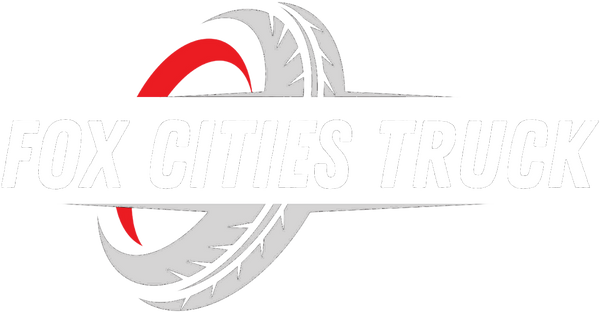
Uneven Tire Wear? Don’t Replace Tires Until You Check These Parts
Share
When you notice your tires looking a little worse for wear, it’s tempting to rush out and replace them. But what if I told you the tires aren’t always the real problem? Just like a headache can sometimes hint at a deeper issue, uneven tire wear could be your vehicle’s way of waving a red flag. Before you shell out cash on new rubber, let’s take a closer look under the hood—and under the truck!
Understanding Uneven Tire Wear
Uneven tire wear simply means your tires aren’t wearing down at the same rate across the tread. Maybe the edges look bald while the center still has life. Think of it like wearing out one shoe faster than the other—it’s a sign something’s off.
Why You Shouldn’t Ignore It
Ignoring uneven wear is like ignoring a check engine light. It not only shortens your tire’s life but could signal bigger problems lurking underneath, threatening your safety and your wallet.
Common Uneven Truck Tire Wear Causes
Let’s dig into what really causes uneven truck tire wear. Spoiler alert: it’s not always just old tires.
Suspension Problems
Your truck’s suspension is like its skeletal system. If parts like ball joints, bushings, or control arms get worn out, they throw off how your tires hit the road, leading to patchy wear.
Key Point:
Always check suspension parts before blaming the tires!
Wheel Alignment Issues
Have you ever pushed a shopping cart that pulls hard to one side? That’s poor alignment in action! Misaligned wheels cause tires to scrub the road at weird angles, wearing them unevenly.
Key Point:
A simple alignment check can save you hundreds of dollars in new tires.
Improper Tire Inflation

Too much air, and your tires wear down the center. Too little, and the edges take the hit. Keeping the right pressure is like wearing properly fitted shoes—comfort and longevity depend on it.
Pro Tip:
Check your tire pressure monthly and before long trips!
Worn Out Shocks and Struts
Shocks and struts don’t just make rides smooth; they keep your tires firmly planted. If they’re worn, your tires bounce excessively, leading to cupping or scalloped wear patterns.
Sign to Watch:
If your truck feels like a pogo stick, check those shocks!
Damaged or Bent Wheels
Even a slight bend from hitting a pothole can affect how your tires sit on the road. A bent rim may cause vibrations and uneven wear that sneaks up on you.
Key Point:
If your steering wheel shakes, it’s time to check for wheel damage.
Faulty Wheel Bearings
Wheel bearings let your wheels spin freely. When they’re failing, they can cause your wheels to tilt ever so slightly—enough to chew through a tire edge quickly.
Warning Sign:
Listen for grinding noises when you drive!
Brake System Troubles
Sticking calipers or uneven brake pad wear can create hot spots on your tires. These areas get softer and wear faster, much like a marshmallow under a campfire.
Pro Tip:
Have your brakes inspected regularly, especially if you notice pulling when braking.
Driving Habits That Hurt Tires
Are you a curb-hopper or a hard braker? Aggressive driving habits can punish your tires mercilessly. Smooth, steady driving helps keep them evenly worn and happy.
Quick Tip:
Easy does it on the gas, brakes, and steering.
How Tire Rotation Helps
Rotating your tires is like rotating your mattress— it evens out the wear and extends life. Most pros recommend a tire rotation every 5,000 to 8,000 miles.
Key Benefit:
Regular rotation can nearly double the life of your tires!
When Tires Actually Need Replacing
Sometimes, replacement is the answer. If the tread depth is below 2/32", cords are showing, or there’s visible cracking, it’s time to say goodbye.
Test It:
Use the “penny test” to check tread depth easily.
How to Prevent Uneven Tire Wear
- Check tire pressure monthly.
- Get wheel alignments once a year or if you notice pulling.
- Inspect your suspension every 20,000 miles.
- Rotate your tires religiously.
- Drive like you’re carrying a birthday cake—not a load of bricks.
- Final Thoughts
Before you rush out and spend big on new tires, give your truck a full health check. Many times, uneven truck tire wear causes boil down to hidden mechanical issues you can fix for much less than a new set of tires. Stay ahead of the game, and your truck—and wallet—will thank you.
FAQs
1. What are the most common uneven truck tire wear causes?
Common causes include poor wheel alignment, worn suspension parts, bad shocks, incorrect tire pressure, and faulty wheel bearings.
2. How can I tell if my tire wear is caused by alignment problems?
If your truck pulls to one side or your steering wheel feels off-center, chances are your wheels are misaligned.
3. Can bad shocks alone cause uneven tire wear?
Yes! Worn shocks can cause your tires to bounce, leading to irregular tread patterns known as cupping.
4. How often should I rotate my truck tires to avoid uneven wear?
Rotating your tires every 5,000 to 8,000 miles helps distribute wear more evenly and extend tire life.
5. Is it safe to drive on unevenly worn tires?
It’s risky. Unevenly worn tires can reduce traction, increase braking distance, and even lead to blowouts—so it’s better to address the issue quickly.
